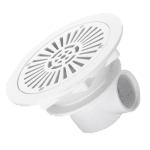Indoor swimming pool design
Designing an indoor swimming pool involves a blend of functionality, aesthetics, and technical considerations to create a comfortable and visually appealing environment within an enclosed space. Whether for residential, commercial, or institutional use, indoor pools offer year-round enjoyment, privacy, and convenience, shielded from external weather conditions. Here’s an in-depth exploration of indoor swimming pool design, covering key elements, design considerations, materials, features, and inspirational ideas.
Key Elements of Indoor Swimming Pool Design (Indoor swimming pool design)
- Space Planning and Layout:
- Accessibility: Ensure easy access to the indoor pool area from adjoining spaces such as changing rooms, bathrooms, and relaxation areas.
- Ventilation: Incorporate adequate ventilation systems to control humidity levels and maintain indoor air quality, preventing moisture buildup and ensuring comfort for users.
- Natural Light: Strategically place windows, skylights, or glass walls to maximize natural light while maintaining privacy and insulation.
- Pool Shape and Size:
- Functional Design: Choose a pool shape (e.g., rectangular, freeform, lap pool) that suits intended activities such as swimming, aquatic exercises, or recreational use.
- Size Considerations: Determine pool dimensions based on available space, user preferences, and functional requirements, ensuring sufficient depth for diving and safe swimming.
- Structural Considerations:
- Building Structure: Assess structural integrity and load-bearing capacity to support the weight of the pool, water, and additional features, consulting with engineers and architects as necessary.
- Waterproofing: Implement effective waterproofing measures for floors, walls, and surrounding areas to prevent water leakage and structural damage over time.
Design Features and Aesthetic Considerations (Indoor swimming pool design)
- Interior Finishes and Materials:
- Pool Surfaces: Choose durable and non-slip pool finishes such as tiles (ceramic, glass mosaic), plaster, or fiberglass, enhancing visual appeal and ease of maintenance.
- Decorative Elements: Integrate decorative tiles, patterns, or underwater lighting to create ambiance and enhance the aesthetic appeal of the indoor pool environment.
- Lighting and Ambiance:
- Natural and Artificial Lighting: Use a combination of natural daylighting and artificial lighting fixtures (LED, recessed lighting) to illuminate the pool area, enhancing visibility and creating a welcoming atmosphere.
- Color Temperature: Select lighting with adjustable color temperature to create different moods and enhance the pool’s visual appeal during daytime and evening use.
- Climate Control and Comfort:
- Heating Systems: Install efficient heating systems such as electric heat pumps, gas heaters, or solar thermal collectors to maintain comfortable water temperatures year-round.
- Dehumidification: Incorporate dehumidifiers or ventilation systems with humidity controls to manage indoor moisture levels and prevent condensation on surfaces.
Inspirational Indoor Swimming Pool Designs (Indoor swimming pool design)
- Contemporary Elegance:
- Design a sleek indoor pool with clean lines, minimalist décor, and floor-to-ceiling windows offering panoramic views of surrounding landscapes or urban skylines.
- Spa-like Retreat:
- Create a tranquil spa environment with an indoor pool featuring waterfalls, cascading fountains, and integrated hot tubs or whirlpools for relaxation and hydrotherapy.
- Architectural Integration:
- Integrate the indoor pool seamlessly into the architecture of the building, using materials and finishes that complement the interior design style and enhance spatial continuity.
Sustainability and Energy Efficiency (Indoor swimming pool design)
- Energy-efficient Systems:
- Solar Heating: Utilize solar thermal panels or heat pumps for pool water heating, reducing energy consumption and operational costs while promoting sustainability.
- LED Lighting: Install energy-efficient LED lights with programmable controls to minimize electricity usage and enhance the pool’s aesthetic appeal.
- Water Conservation:
- Automatic Covers: Use automatic pool covers to reduce water evaporation, heat loss, and chemical use, maintaining water quality and conserving resources.
- Recirculation Systems: Implement advanced water recirculation and filtration systems to optimize water usage and maintain high standards of cleanliness and hygiene.
Maintenance and Operational Considerations
- Cleaning and Maintenance: (Indoor swimming pool design)
- Automated Cleaning Systems: Install robotic cleaners or automatic vacuum systems to efficiently clean pool surfaces and maintain water clarity with minimal manual effort.
- Routine Inspections: Conduct regular inspections of mechanical systems, water chemistry, and structural integrity to ensure safe operation and prolong the lifespan of pool equipment.
- Safety Features: (Indoor swimming pool design)
- Non-slip Surfaces: Ensure pool decks and surrounding areas have non-slip surfaces to prevent slips and falls, especially in wet conditions.
- Safety Barriers: Install safety fences, gates, or pool covers to restrict access and ensure compliance with local safety regulations.
- Indoor swimming pool design offers a luxurious and versatile option for homeowners looking to enjoy the benefits of swimming year-round, regardless of weather conditions. Whether you’re planning a private retreat or a family-friendly space, several key elements can help create a stunning and functional indoor pool area.
- 1. Space and Layout
- When designing an indoor pool, the first consideration is the available space. Assessing the size and shape of the area will help determine the pool’s dimensions. A rectangular pool is ideal for swimming laps, while a freeform design can create a more relaxed and inviting atmosphere. Ensure ample space around the pool for lounging, seating, and movement.
- 2. Ventilation and Humidity Control
- Proper ventilation is crucial in indoor pool design to prevent humidity and moisture buildup, which can lead to mold and structural issues. Installing a dehumidification system helps maintain comfortable humidity levels, while strategically placed windows or skylights can introduce natural light and fresh air, enhancing the overall ambiance.
- 3. Materials and Finishes
- Choosing the right materials is essential for both aesthetics and durability. Consider using non-slip tiles or natural stone for the pool deck to ensure safety. For the pool interior, options such as ceramic tiles or fiberglass can create a polished look. Incorporating glass walls or large windows can provide visibility to the outside while enhancing the sense of space.
- 4. Lighting Design
- Effective lighting is vital in indoor pool areas. Utilize a combination of natural light, ambient lighting, and accent lighting to create a warm and inviting environment. LED lights can be integrated into the pool design, offering color-changing options for a dynamic atmosphere during evening swims.
- 5. Amenities and Features
- To enhance the indoor swimming experience, consider adding amenities such as a spa, sauna, or steam room. These features promote relaxation and wellness, making the indoor pool area a complete retreat. Swim-up bars or built-in seating can also provide comfort and convenience for entertaining guests.
- 6. Landscaping and Decor
- Incorporating greenery and decor can soften the indoor space and create a serene atmosphere. Potted plants, water features, or even a vertical garden can enhance the aesthetic appeal while providing a calming ambiance. Choose decor elements that complement the pool design, such as modern furniture or relaxing loungers.
Conclusion
Designing an indoor swimming pool involves careful planning, attention to detail, and integration of functional elements with aesthetic considerations to create a comfortable, safe, and visually appealing aquatic environment. Whether creating a spa-like retreat, a contemporary architectural masterpiece, or a family-friendly recreation space, indoor pools offer versatility and year-round enjoyment while enhancing the value and appeal of residential, commercial, or institutional properties. By incorporating innovative materials, energy-efficient technologies, and sustainable practices, indoor swimming pool designs can achieve a harmonious balance of comfort, luxury, and environmental responsibility, providing a lasting investment in lifestyle and well-being.


















